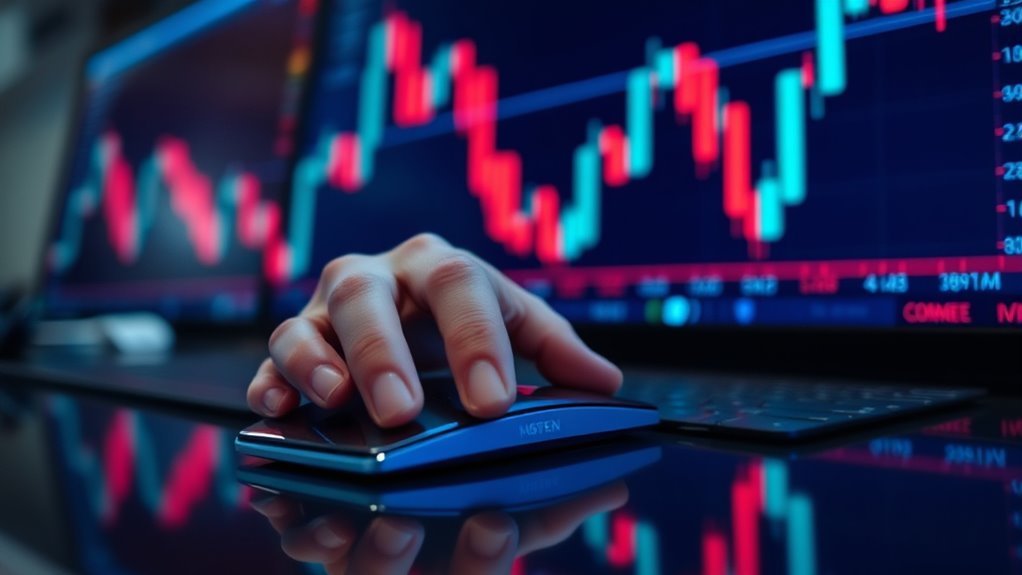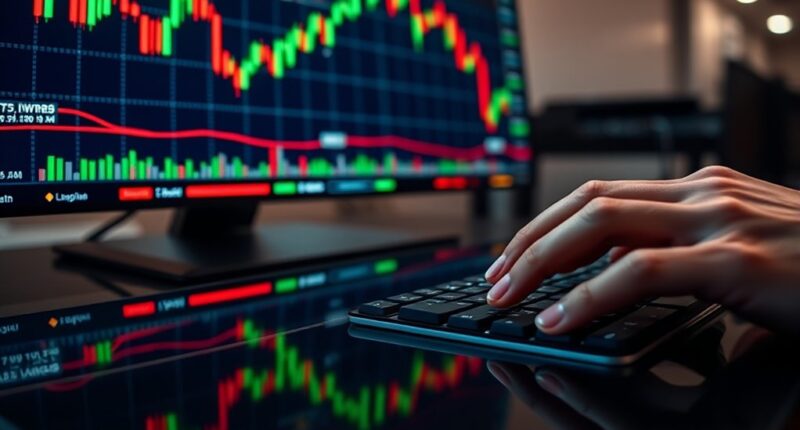Slippage happens because when you swap tokens, the trade affects the liquidity pool’s ratios, causing the price to shift from what you initially saw. Larger trades or those during high market volatility tend to cause more slippage, making your final price different from the expected one. Liquidity pools are constantly changing, so the price can move quickly. If you want to understand how to minimize slippage, keep exploring these trading dynamics.
Key Takeaways
- Slippage occurs when the execution price differs from the initial quote due to market movements during the trade.
- Large trades impact the liquidity pool, shifting token ratios and causing the final price to deviate from the expected.
- Price impact increases with smaller pools and larger trade sizes, leading to more significant slippage.
- Market volatility and concurrent trades can also cause the actual execution price to differ from the initial estimate.
- Using smaller trade amounts or high-liquidity pools can help reduce slippage and improve trade accuracy.

Have you ever wondered why a trade doesn’t execute at the expected price? It’s a common question among traders, especially when dealing with cryptocurrencies and decentralized exchanges. The answer often comes down to how liquidity pools and price impact work together to influence the final execution price. When you place an order, you’re not just interacting with a single seller or buyer; instead, you’re tapping into a liquidity pool—an aggregated collection of funds provided by other users. These pools allow for seamless trading without the need for a counterparty on the other side of each transaction. However, because these pools are finite and constantly changing, executing a large trade can shift the balance within the pool, leading to a different price than what you initially saw.
Large trades in liquidity pools cause price shifts, resulting in slippage from expected execution prices.
This is where price impact comes into play. Price impact refers to how much the price moves as a result of your trade. The larger your swap, the more likely it is to influence the current state of the liquidity pool. Think of it like pushing a large block of ice across a table—your push causes it to slide and change position, just as your trade affects the pool’s token ratios. When you submit an order, especially a sizable one, the pool’s ratio of tokens shifts, which results in a different price than the one displayed before you confirmed the transaction. This discrepancy is the essence of slippage.
Slippage happens because the price you see before executing your trade is based on the pool’s current state, but by the time your transaction is processed, the pool has already been affected by other trades or your own. The more activity happening in the pool, the more volatile the price can be. If the pool is shallow—meaning it doesn’t hold much liquidity—your trade will cause a larger price impact, leading to more slippage. Conversely, in a deep liquidity pool, your trade’s impact is minimized, and the execution price stays closer to the original estimate.
Understanding the dynamics of liquidity pools and price impact helps you better anticipate slippage. When trading large amounts or during periods of high volatility, you should expect the final price to differ from the initial quote. Strategies like splitting large orders into smaller chunks or choosing pools with higher liquidity can help reduce unexpected deviations. Ultimately, recognizing that liquidity pools are fluid and that each trade influences the market can save you from surprises and help you make smarter trading decisions.
Frequently Asked Questions
Can Slippage Be Completely Avoided in Trading?
You can’t completely avoid slippage when trading because market volatility and rapid price changes make it impossible to guarantee execution at your desired price. However, you can minimize slippage by using limit orders, which specify the maximum or minimum price you’re willing to accept. Keep in mind that during high volatility, even limit orders may not be filled, but they do offer more control over your trade prices.
How Does Slippage Affect Long-Term Investment Strategies?
You should know that slippage can considerably affect your long-term investment strategies, especially during periods of market volatility. When you place large or quick trades, the price impact may cause your execution to differ from the expected price, impacting your returns over time. Being aware of this helps you plan better, set realistic expectations, and use strategies like limit orders to minimize adverse effects caused by market fluctuations.
Is Slippage More Common in Certain Cryptocurrencies?
You might notice slippage more often in cryptocurrencies with high price volatility or lower liquidity pools. When prices fluctuate rapidly, your order can fill at a different price than expected. Less liquid markets also cause slippage because there aren’t enough buyers and sellers to match your trade at the quoted price. So, in less stable or smaller cryptocurrencies, slippage tends to be more common, impacting your trading accuracy.
What Tools Can Help Predict Slippage Before Executing a Trade?
You can use tools like slippage calculators and trading platforms with built-in risk management features to predict potential price impact before executing a trade. These tools analyze market depth and liquidity, helping you estimate how your order might influence the price and impact order execution. By doing so, you reduce surprises and better manage slippage, ensuring your trades happen closer to your intended price.
Does Slippage Impact Both Buy and Sell Orders Equally?
Slippage affects both buy and sell orders, but it can impact them differently depending on market volatility and liquidity pools. During high volatility, prices shift rapidly, increasing slippage for both types of orders. Limited liquidity pools can cause larger price gaps, making you pay more on buys or receive less on sells. So, you should always consider current market conditions to minimize slippage’s effect on your trades.
Conclusion
Understanding slippage helps you set realistic expectations when swapping assets. Remember, market volatility and liquidity can cause prices to shift between the time you see a rate and when your trade executes. To minimize surprises, consider trading during active market hours or using limit orders. By staying aware of slippage, you’ll make smarter decisions and avoid unexpected costs, ensuring your trades align more closely with your initial price expectations.








